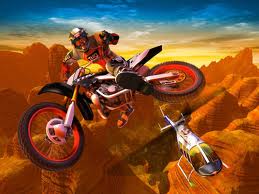There are only 748 steps to High Hrothgar. Yeah, I counted.
-

XPidgex Jefferson - Posts: 3398
- Joined: Fri Sep 08, 2006 4:39 pm
So yeah, I was disappointed by this. Many other places seems to have gotten more attention.
Oh well, maybe someday if they somehow manage to figure out a way to let us see our own damned feet...
-

Liii BLATES - Posts: 3423
- Joined: Tue Aug 22, 2006 10:41 am
So he really did just blatantly lie, and not even just a little lie, but off by a factor of over seven? Wow, just wow. It's not game breaking, but that's just shameful. I did enjoy the path up the mountain though.
-

Melis Hristina - Posts: 3509
- Joined: Sat Jun 17, 2006 10:36 pm
I was bored too. So I decided to do my math to find out how high the Throat of the World really is. Now I may be corrected, but it is not really big. Of course I ignored the earth rotation and the air friction.
How did I do it? First I needed to find out if the gravity is equal to the one on earth (9,81 m/s2). So I used an Iron ingot and put it at the same high as my head. Then I dropped it. Within 0,99s it hit the ground. Now I got this nice little formula:
t = Root (2h / g) (h = High, g = Gravity)
I estimate my own high on 1,8m. Since I know the time and the high I can get the gravity:
(2 * 1,8) / 0,992 = 3,67 m/s2. (Well, this is some major difference from our world!)
Since I know the Gravity now, I can use the same formula to get the time of my character when he fell down the mountain (actually I used myself and the time the ingot hit the ground).
t = 9,66s
(t2 * g) / 2
= 171,23m
The mount Everest has ~8000m. So that's that.
Funny thing btw: my character hitted the ground earlier then the iron ingot (3s apart). This is a perfect example that this experiment cannot be taken seriously. In real life the volume determines how fast an object hits the ground (not the mass!). Since my body has much much more volume to interact with the air friction the iron ingot should have been there first.
(I do not claim that any of this is correct)
How did I do it? First I needed to find out if the gravity is equal to the one on earth (9,81 m/s2). So I used an Iron ingot and put it at the same high as my head. Then I dropped it. Within 0,99s it hit the ground. Now I got this nice little formula:
t = Root (2h / g) (h = High, g = Gravity)
I estimate my own high on 1,8m. Since I know the time and the high I can get the gravity:
(2 * 1,8) / 0,992 = 3,67 m/s2. (Well, this is some major difference from our world!)
Since I know the Gravity now, I can use the same formula to get the time of my character when he fell down the mountain (actually I used myself and the time the ingot hit the ground).
t = 9,66s
(t2 * g) / 2
= 171,23m
The mount Everest has ~8000m. So that's that.
Funny thing btw: my character hitted the ground earlier then the iron ingot (3s apart). This is a perfect example that this experiment cannot be taken seriously. In real life the volume determines how fast an object hits the ground (not the mass!). Since my body has much much more volume to interact with the air friction the iron ingot should have been there first.
(I do not claim that any of this is correct)
-

Francesca - Posts: 3485
- Joined: Thu Jun 22, 2006 5:26 pm
Some people have way too much time on there hands
-

Felix Walde - Posts: 3333
- Joined: Sat Jun 02, 2007 4:50 pm
Not surprising really. The journey to High Hrothgar was very underwhelming...
Yeah, I was expecting it to take at least 20 minutes, not 5. >.>
-

x_JeNnY_x - Posts: 3493
- Joined: Wed Jul 05, 2006 3:52 pm
Even without its 7,000 steps, it still got GOTY.
-

Laura Ellaby - Posts: 3355
- Joined: Sun Jul 02, 2006 9:59 am
Yeah...and did you know that the game is scaled? The guy a few posts before me even proved that the Throat of the World is only about 171 meters using game physics. In reality, it would be about 3400 meters considering you don't need an oxygen tank and yet it still is the highest landmark in the entire game. You can't use video game physics to disprove video game lore.
Lore is lore and the actual game is scaled. Sorry to disappoint you but Todd Howard doesn't exactly have a PhD in Physics. As such, Todd probably just copy pasted the stairs to the top, added some flair and some snow covered ones to make it look different (which it does) and probably couldn't fit them all.
Did you also know that in lore, the Staff of Magnus is supposed to be this grand amazing thing and yet it's not even that good?
Lore is lore and the actual game is scaled. Sorry to disappoint you but Todd Howard doesn't exactly have a PhD in Physics. As such, Todd probably just copy pasted the stairs to the top, added some flair and some snow covered ones to make it look different (which it does) and probably couldn't fit them all.
Did you also know that in lore, the Staff of Magnus is supposed to be this grand amazing thing and yet it's not even that good?
-

kirsty williams - Posts: 3509
- Joined: Sun Oct 08, 2006 5:56 am
Todd lied?
Do you think this is the first time?
-

Céline Rémy - Posts: 3443
- Joined: Sat Apr 07, 2007 12:45 am
It's called exaggeration. Your parents do it toowhen they talk about how tough life was when they were kids.
Maybe your parents are little [censored]es but mine aren't
-

Lou - Posts: 3518
- Joined: Wed Aug 23, 2006 6:56 pm
Maybe your parents are little [censored]es but mine aren't
Really?
You're going with the 'My dad can beat up your dad' argument?
What are you, five?
-

kirsty williams - Posts: 3509
- Joined: Sun Oct 08, 2006 5:56 am
